Are you wondering about how to travel China cheap? Take a look at our 15-day budget tour below! This tour includes not only major cities like Beijing, Xi’an, Shanghai, but also the less-visited but mythical place, Tibet. As for the Tibet part, your budget Tibet tour will bring you to the major city Lhasa together with some relatively smaller places like Gyangtse, Dingri. What’s more, you will have a chance to take a look at the highest mountain in the world, Mount Everest. In the other cities, you will visit the Forbidden City and the Great Wall in Beijing, the Terra-cotta Warriors and Horses in Xi’an, the Bund and Yu Garden in Shanghai, along with many other must-visit attractions. And we have also listed some optional activities that you can choose from. If you are looking for tours with fewer days, you can also check out the other budget China tours on our website or simply contact us to tailor-make your trip!

Upon your arrival in Beijing, you will find our guide holding your name sign at the arrival hall and ready to welcome you aboard our China tour! We will first take you on a short trip to one of the most representative places in Beijing, Wangfujing Street, the No.1 shopping street in Beijing. Wangfujing Street is a famous commercial district with centuries-long history, located on the north side of East Chang'an Street in the city center. It was first formed in the Yuan Dynasty (1271-1368) and has been in existence for more than 700 years. Later, in the Qing Dynasty (1636-1912), eight royal residences were built on this street, and a well was drilled for the royal family's drinking water. The street was then called Wangfujing (literal meaning-royal family’s well). You can almost find anything you want there, from inexpensive to luxury. There are affordable brands like Uniqlo, and also luxury brands like Luis Vuitton. After some free time there, your guide will take you to your designated hotel in Beijing.
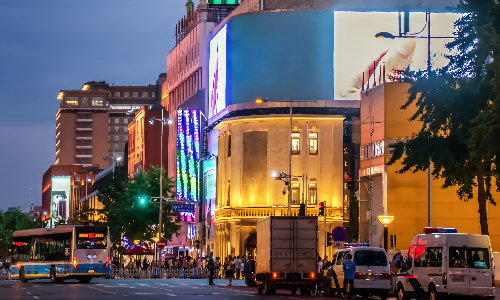
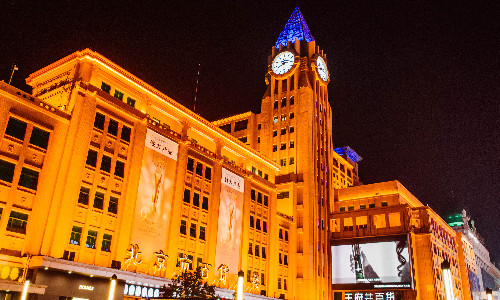
Your Beijing tour today will start with one of the landmarks of China-Tian’anmen Square. It is the largest city center squares in the world. Many of the national events and ceremonies are held here, including the daily flag-raising ceremony. Watching the flag rise with the sun is something that many Chinese travelers must do when they visit Beijing. You can take a nice group picture here on the square.
Then you will walk to the Forbidden City (closed each Monday). It is called Gu Gong in Chinese, which means former royal palace. It used to be the home of 24 emperors that ruled China for about 600 years. Some also call it the Palace Museum. This name represents the place vividly since it used to be a palace and now a museum for descendants to visit. Our guide will take you to not only the main halls along the central axis but also some less-visited palaces.
Afterward, we will walk to Jingshan Park. It’s a nice place to take a panoramic picture of the Forbidden City you just visited. The Wanchun Pavilion in Jingshan Park is the highest point nearby that can overlook the Forbidden City, and it used to be the highest point in the city center in ancient times before the skyscrapers are built.
You will have lunch on your own but feel free to ask your guide for suggestions! In the afternoon, we will drive to the outskirts of the city and visit the Summer Palace. It is located in the western suburb and is the first Chinese classical garden that made its name on the World Heritage List in 1998. This is the place where the royal families spend their summertime. During the reign of Emperor Guangxu of the Qing Dynasty, Empress Dowager Cixi used millions of taels of silver to rebuild the Summer Palace for her personal enjoyment. She decreed that the Summer Palace should be constructed as "Heaven on Earth". The Buddha Incense Pavilion symbolizes the Palace of Heaven; Kunming Lake is like the River of Heaven; Bafang Pavilion and the Dragon King Temple area represent the earth. Since there is a River of Heaven, of course, there should be Cowherd and Weaving Maiden according to mythical stories of ancient China (The Cowherd and Weaving Maiden are two characters in a Chinese mythical story. They are in love but cannot be united and they are separated by the River of Heaven.). Therefore, a bronze bull was placed at the Kunming Lake below the Bafang Pavilion to symbolize the Cowherd, and a Weaving Maiden Pavilion was built next to the stone boat to symbolize the Weaving Maiden. The bronze bull's body faced east, while its head turned to the northwest, facing the direction of the Weaving Maiden Pavilion. Thus, with Kunming Lake as the boundary, the pattern of Cowherd on the left and Weaving Maid on the right is formed. Just like what happened in the mythical story of ancient China, the Cowherd and Weaving Maiden cannot be united.
Optional:
1. We can arrange a photographer to take a group picture at Tian’anmen Square for you. The picture will be given to you together with a guidebook of Beijing before you leave Beijing.
2. Dinner at a local restaurant and taste the notable Peking Roast Duck. This dish is something you must try when you are in Beijing since it is one of the signature dishes of this city. The duck is usually cut in slices, with crispy skin and juicy meat. It is usually served with thin pancakes, fresh-cut scallion, and sauces. You can dip the duck slices in the sauce then wrap them with scallion inside the pancake, and then it’s good to go into your mouth! Or you can try the duck alone to feel the juice and fragrance blast in your mouth.
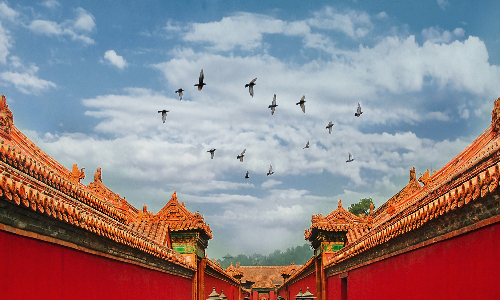
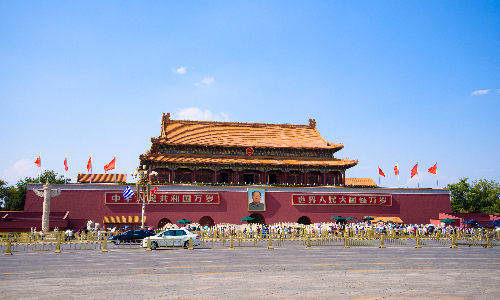
This morning we will first drive for about 2 hours to visit the Great Wall. This is somewhere you cannot miss on your Beijing tour. The section we will take you to is the Mutianyu Great Wall. The Mutianyu section is in the Northeast of Beijing and is about 80 kilometers from the city center. The Great Wall is known to the world as the longest defensive project. And there’s a saying that goes like “You cannot be regarded as a great person if you haven’t been to the Great Wall”. The Mutianyu Great Wall is 5,400 meters long, and it is the longest part in China, with an open section of 2,250 meters. If you are under 60 years old, a toboggan experience is available to you here! It’s a slideway that you can slide down from the top of the mountain to the foot. Lunch will be on your own but our guide will be happy to help with suggestions.
On your way back to the city center, we will drive past the Water Cube and Bird’s Nest that used to be the venues for the 2008 Beijing Olympic Games. You can take a picture of them from afar. Afterward, we will drive to the Silk Street Market. It is also called Xiushui Market. Since its opening, Silk Street has won the favor of guests from all over the world with the concept of "first-class quality with a great price". You will almost find everything you can imagine as souvenirs such as fine clothing, silk, pearls, porcelain, and tea. Over the past two years, hundreds of world dignitaries and their wives, as well as numerous international celebrities, have visited Silk Street. After some shopping time, we will take you back to your hotel. You can also stay longer here and transfer back to your hotel on your own.
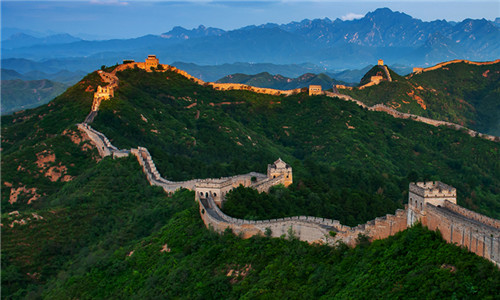

 Xian
Xian Before your trip to Xi’an, your guide will take you to your last stop in Beijing, the Temple of Heaven. This temple used to be the place where emperors of the Ming and Qing Dynasties worship the god of heaven and pray for a harvest. In addition to admiring the exquisite architecture of the Hall of Prayers like most tour groups will do, our guide will also escort you to places like the Echo Wall and the Three Sound Stones to take a further look into the wisdom of the Chinese ancestors. After visiting the Temple of Heaven, your guide will escort you to the train station to take an overnight soft-sleeper train to Xi’an. The estimated train is T55 15:50/5:24+1. The soft-sleeper section on the train is with private compartments. Each compartment is equipped with four berths, two tiers on each side. We can also book the hard sleeper if you would like to bring down the price. The hard-sleeper section is an open section with no doors. There will be six berths and three tiers on each side per partition.
However, if you want to experience the bullet train, it is also available. It is much faster than regular trains and takes about 4 to 5 hours from Beijing to Xi’an. Yet this way you will need to stay one more night in Xi’an hotel. The estimated train is G87 14:00/18:20.
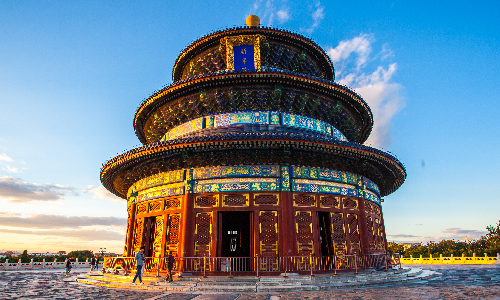
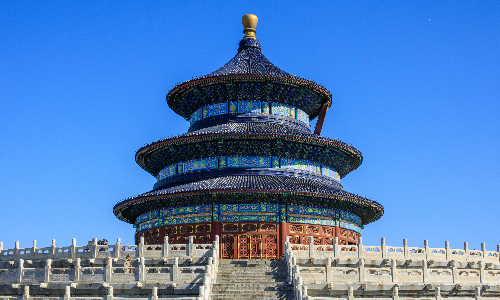
The first place your guide will take you to in Xi’an is the Terracotta Warriors and Horses Museum. This museum is the largest ancient military museum in China and the eighth wonder of the world. Looking at the terracotta warriors and horses that have been buried by the yellow earth for more than 2,000 years, their tall bodies and the whole army formation, as well as the sense of intimidation created by the army formation, make the sightseers wonder and contemplate. As a Japanese scholar said: if you haven't been to Xi'an, you haven't been to China; if you haven't seen the Terracotta Army, you haven't been to Xi'an. If you look close enough, every figure is different, from body structure to facial expressions to the shape of their eyebrows. Lunch is on your own, but our guide will offer some suggestions!
After lunch, your guide will take you to the Big Wild Goose Pagoda. It was originally built to store the Buddhist classics brought back from Tianzhu (ancient India) by master Xuanzang. There is a big square on the south side of the Big Wild Goose Pagoda. If you visit here in the evening by yourself, you will have a chance to see the music fountain nearby. It is the largest rectangular musical fountain in Asia.
Then you will visit the Great Mosque. It is in the downtown area but it stands out in the hustle and bustle of its surroundings. It is where Muslims in Xi’an gather and worship. The main hall in the mosque can accommodate 1000 people to worship at the same time. There is a bazaar nearby called the Muslim Quarter. Your guide will take you there and you will find all sorts of Muslim snacks there like the Rougamo, Pita Bread Soaked in Lamp Soup, Biangbiang Noodles. Also, souvenirs of Xi’an like terracotta clay figures and shadow play figures can easily be seen in small stores along the main street of the Muslim Quarter. You can have something for dinner here. Afterward, your guide and driver will accompany you to your hotel in Xi’an.
Optional: Tang Dynasty style performance with dumpling dinner.
The Tang Dynasty song and dance show is a typical type of performance you can see in Xi’an. We will take you to one of the best places to watch the show, the Tang Dynasty Palace. The show will start at 20:30 and end at 21:40. The music of this show is all played live. What’s even better is that you can have a dumpling feast before or after watching the show. The restaurant in the palace is just a few steps away from the theatre.
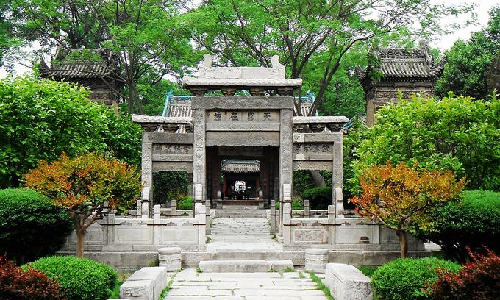
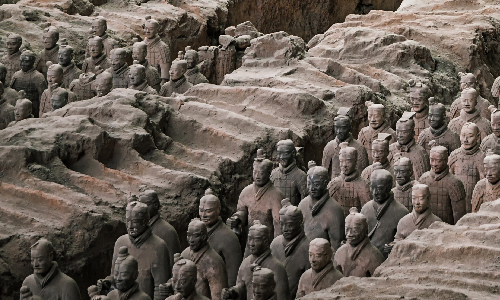
 Lhasa
Lhasa Today you will fly to Lhasa in Tibet, and the estimated flight is MU2335 11:40/15:20. Lhasa is the political, economic, and cultural center of the entire Tibetan region, as well as a sacred place for Tibetan Buddhism. With an average altitude of 3,663.5 meters and over 3,000 hours of sunshine per year, Lhasa is known as the "City of Sunshine". Upon arrival, your local guide will escort you to your hotel in Lhasa. On the way to the city, we will pass by the longest river in Lhasa, the Yarlong Tsangpo River. It is the longest highland river in China and one of the rivers with the highest altitude in the world. It originates in the Himalayas in southwestern Tibet. The rest of the day is yours. Have some rest and adjust to the high altitude.
Here are some tips for first-time Tibet visitors:
1. Carry your passport with you throughout your stay in Tibet because there will be many security checks.
2. The best travel season is from March to September. It will be hot in central China from June to September, but the weather in Tibet is just fine. Tibet will usually receive most tourists in July and August.
3. About clothes, no matter what season you come to Tibet, a thick down jacket is required. Even in the height of the temperature season (June to August), the temperature in the area where Everest is viewed or other high-altitude places are still freezing. The lowest temperature in the downtown is about minus 8 degrees Celsius (17.6 degrees Fahrenheit) and the highest is about 29 degrees Celsius (84.2 degrees Fahrenheit) throughout the year.
4. Sunscreen is a must since the UV ray is strong in Tibet. Other sun-protective measures are also recommended. You can also pack sunglasses, hats, umbrellas…
5. About the food, you can pack some snacks with you just in case you cannot get used to the Tibetan food.
6. To avoid high altitude stress, don’t run, jump, or have alcoholic drinks. Also, try not to eat as much as you used to, and drink more water.
7. It’s not allowed to take pictures inside the Potala Palace and some other temples. So, you’d better ask someone before taking pictures in any temple.
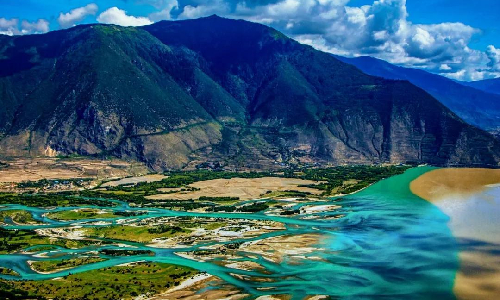
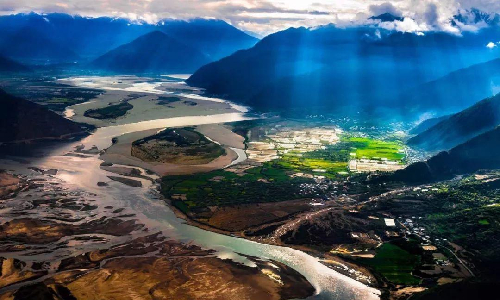
Your Lhasa tour today will start with the landmark Potala Palace. It is the highest and most majestic palace in the world. It is the symbolic building of Lhasa and Tibet. Potala is the Sanskrit word for the abode of the Bodhisattva Guanyin, hence the Potala Palace is a holy place for all pilgrims.
Afterward, we will take you to the Jokhang Temple. It is in the center of the old town of Lhasa. The Jokhang Temple is built by Songtsen Gampo to worship Buddha Shakyamuni. People often say that the Jokhang Temple exists before the city of Lhasa. The main collection is the statue of 12-year-old Buddha Shakyamuni that Princess Wencheng brought with her when she married Songtsen Gampo.
After you visit Jokhang Temple, we will take you to Barkhor Street that surrounds the Jokhang Temple. With smooth granite slabs, its roads are not wide and distinctive Tibetan-style buildings can be seen on both sides. There are all kinds of jewelry shops, antique shops, and art galleries on the street. The stalls on both sides of the Barkhor Street selling Tibetan ornaments and the people surging by the stalls represent the lively side of Lhasa city. After some free time here, your guide will take you back to your hotel.
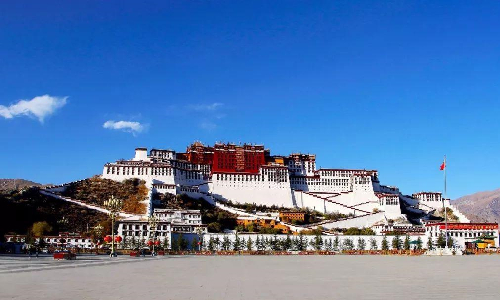
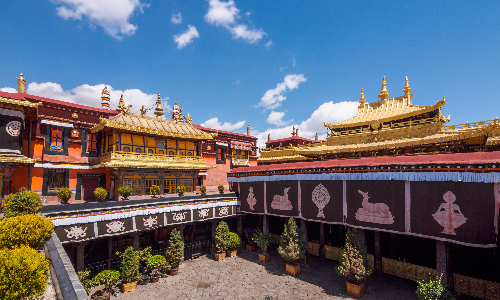
Today you will also tour Lhasa city. Drepung Monastery is the first place for you to visit. Before 1951, the liberation of Tibet, there were more than 10,000 monks and staff in the monastery. With 141 estates and more than 540 pastures, it was the largest monastery of Tibetan Buddhism. Nowadays, it is still regarded as the grandest monastery of Tibetan Buddhism. Lunch will be on your own, but your guide will give you some suggestions.
After your lunch, we will take you to the Sera Monastery. Thousands of Vajra Buddha statues are preserved in Sera Monastery, mostly made locally in Tibet. There are also many bronze Buddha statues brought from inland China or India. The walls of the main hall and the Tsacang sutra hall have a large number of original color frescoes.
Next, we will take you to Norbulingka. It was built in the 1840s, and it used to be the place where the rulers spend their summers. It is also known as the Summer Palace of Lhasa. It is a typical Tibetan-style garden. There are more than 100 kinds of plants inside, including common flowers and trees in Lhasa, exotic flowers and plants in the south and north of the Himalayas, as well as valuable flowers transplanted from the inland China or introduced from abroad. Then your guide will take you back to your hotel.
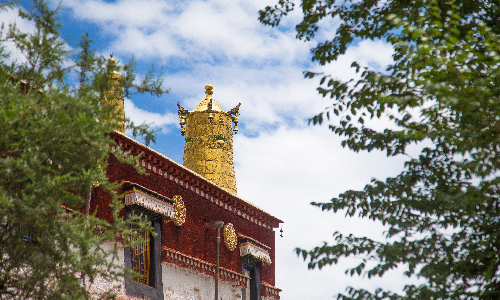
 Gyangtse
Gyangtse Shigatse
Shigatse Today you will be transferred to Shigatse through Gyantse. Shigatse is about 350 kilometers to the west of Lhasa, and the total transfer time for today will be about 6 hours. You will stop at Yamdrok Yumtso Lake and Karola Glacier on the way. The Yamdrok Yumtso Lake is regarded as one of the holy lakes of Tibet. In the Tibetan language, Yamdrok Yumtso mean lake of jasper. And because it is shaped like the coral branches, Yamdrok Yumtso Lake is also known as the Coral Lake.
Then we will continue to drive to visit the Karola Glacier. The Karola Glacier is one of the four snow-capped mountains of Tibet. It is reported that the Karola Glacier is the nearest mountain to the highway in Tibet with a distance of only about three hundred meters.
Next, we will visit Pelkor Monastery. It is also called the Palcho Monastery or Palkhor Monastery. It is a typical Tibetan Buddhist monastery that combines towers and monasteries. What’s more unique is that the temple integrates Tibetan Buddhism Sakya school, Shalu school, and Gelug school, and the three schools coexist perfectly. Lunch is on your own, but your guide will give you some suggestions.
Afterward, we will visit Gyangtse Ancient Street. It has a history of more than 600 years. You might find yellow cows lazily basking in the sun here. The first café in Tibet lies here. The café was the place where spies from different countries exchanged information. You will have some free time here, and then we will take you to Shigatse and check in at your hotel there.
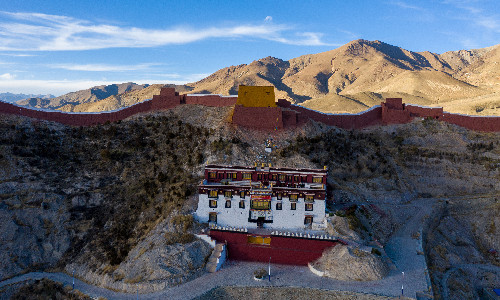
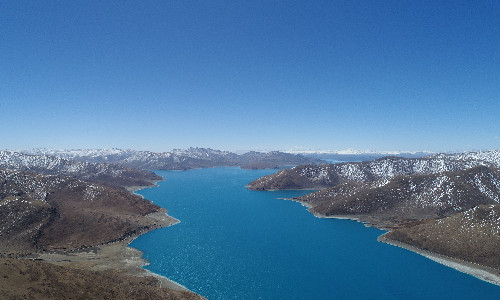
 Dingri
Dingri Today we will drive further to the west to Dingri. It will be about 240 kilometers away and 4.5 hours’ drive. The first place we will take you to is Tashilunpo Monastery. Tashilunpo Monastery is the largest monastery in the Shigatse region of Tibet, located on the slopes of the Nima Mountain in the west of Shigatse City. The Tashilunpo Monastery and Lhasa's three great monasteries-Ganden Monastery, Sera Monastery, Drepung Monastery are collectively known as the Four Great Gelug School Tibetan Buddhism Monasteries.
Then we will visit the Shalu Monastery. It was built in 1087. According to legend, this place was once one of the top ten markets in Tubo Kingdom(633-842).
Afterward, we will head to the Sakya Monastery. Sakya Monastery is located at the foot of Benpo Mountain in Sakya County and is a Tibetan Buddhist Monastery of Sakya School. It is the main monastery of the Sakya school of Buddhism. After you visit the Sakya Monastery, we will take you to Dingri. On the way, our driver will stop at Lhatse. You can have a short rest here. Upon your arrival in Dingri, your guide will help you check in your hotel.
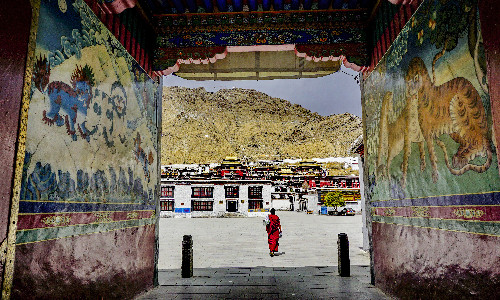
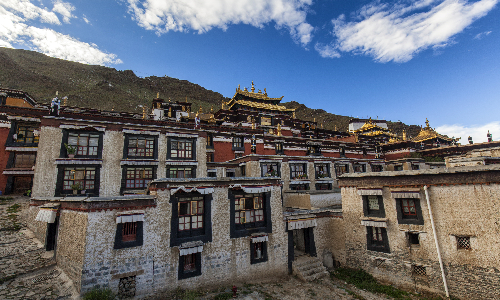
 Shigatse
Shigatse After your breakfast today, we will take you to Mount Everest. Mount Qomolangma, or Mount Everest for short, is the main peak of the Himalayas and the highest mountain in the world. It is between China and Nepal. The Mount Everest base camp is no longer open to tourists now for environmental protection. So, we will stop at other places for you to take pictures of the mountain.
The Rongbuk Monastery is the highest monastery in the world. Located on the western edge of Mount Everest, the Rongbuk Monastery is as good a place as Mount Everest Base Camp to see the highest peaks of Everest. It is a great place to watch the sunrise and sunset over Mount Everest. During the day, it is still stunning just to watch the sun shining over the mountains. After visiting Rongbuk Monastery, your guide will take you back to Shigatse. It will take about 6.5 hours on the way. The driving distance is about 340 kilometers.
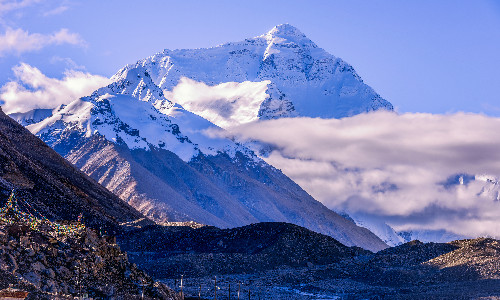
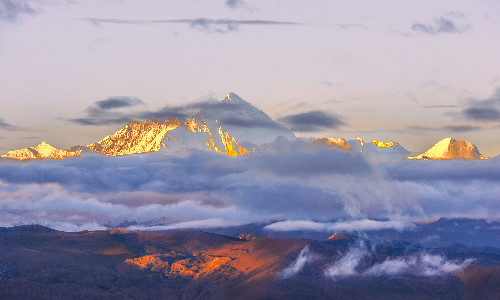
 Lhasa
Lhasa Today we will transfer to Lhasa after your breakfast. It takes about 5 hours on the way from Shigatse to Lhasa. Enjoy the stunning scenery along the way! And you will have a chance to visit a local Tibetan family on the way to get a closer look into the lives of regular Tibetan families. After arrival, you will check in your hotel and have a nice rest. Or you can stroll around on the street to enjoy Lhasa for one last day!
 Shanghai
Shanghai Today you will take a flight to Shanghai. Your guide will pick you up from your hotel lobby and take you to the airport. Your estimated flight is CA3965 10:00/15:40 (with one stop at Chengdu). Upon your arrival in Shanghai, your local guide will accompany you to your hotel. The rest of the day is yours.'h
After your breakfast today, we will first take you to one of the must-visit attractions-Yu Garden(closed each Monday). It is a classical garden in Southern China style. It used to be a private garden in the Ming Dynasty (1368-1644). In the Yu Garden, there are still historical sites such as the Cangshu Pavilion-the birthplace of Hai School (one of the schools of Chinese painting and calligraphy), and Dianchun Hall-the headquarters of the Shanghai Dagger Uprising in the late Qing Dynasty. The ancient people have praised the Yu Garden for its marvelous beauty of southern Chinese construction style. And it got the name "the crown of the famous garden in the southeast China".
After visiting the Yu Garden, you can have some free time at the Shanghai Old Street. The Shanghai Old Street is a place to get a close look into the old Shanghai style architecture. Now, visitors can taste the most authentic snack of Shanghai like Soup Dumplings as well as buy local souvenirs like silk scarves. Lunch is on your own, and you can find a nice place here in Shanghai Old Street.
Next, we will take you to the Bund. The place that everyone will go to when they visit Shanghai. The area between East Yan’an Road and Waibaidu Bridge is named the Bund. It is 1.5 kilometers long and is Shanghai’s most popular attraction. The area around the Bund was originally built as the British Concession, and the buildings were kept till now and work as banks, merchant houses, hotels, restaurants, etc.
The well-known Nanjing Road is where your guide will take you to after visiting the Bund. Nanjing Road is known as the No.1 shopping street in Shanghai, just like Wangfujing Street in Beijing. But what you see there might be relatively expensive. So, after a short walk along Nanjing Road, your guide will take you to the Asia Pacific Market for some real cheap shopping. This market is called “the fake bag market” by locals. You will find bags of all sorts of brands with really low prices here. Besides bags, there are also things like pearls, handicrafts, silk-made stuff.
Optional Tour:
Taking a Huangpu River Cruise to watch the neon lights on the Bund and Lujiazui area is a popular choice for visitors in Shanghai. It will be a 1-hour cruise tour along the most prosperous part of the Huangpu River. Just let us know if you want to have this experience added to the last day of your Shanghai tour.
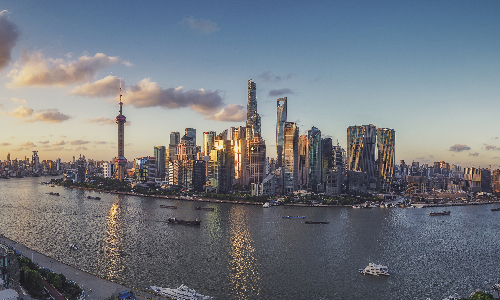
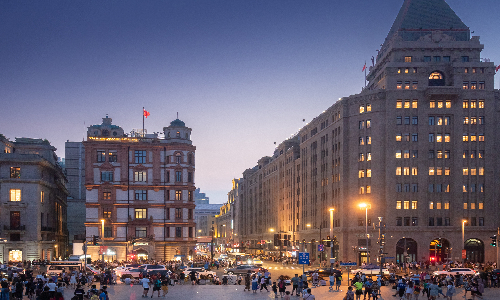
Today your guide and driver will pick you up from your hotel lobby and take you to the airport according to your flight schedule. Have a pleasant journey!
Optional: If you would like to experience the maglev train to Pudong International Airport, we can arrange it for you.
Editor: Liz Lee
Proofreader: Summer Hou
| City | Five Star hotel list | Four Star hotel list |
|---|---|---|
| Beijing | Sunworld Dynasty Hotel Beijing Wangfujing | Sunworld Hotel Wangfujing |
| Lhasa | Shangri-La Hotel, Lhasa | Thangka hotel |
| Other cities in Tibet | Guest House | Guest House |
| Xi'an | Tianyu Gloria Grand Hotel Xi'an | Sunworld Dynasty Hotel |
| Shanghai | Ocean Hotel Shanghai | Courtyard by Marriott Shanghai Central |
 |
![]() About your child or infant, please contact us for a discounted price.
About your child or infant, please contact us for a discounted price.



We started with a few days in Beijing & ended in Shanghai, from where we visited the Forbidden City and Great Wall. In between we visited Terra Cotta Warriors Museum, Panda Base, Shanghai Disneyland.

We had a wonderful holiday in China which will remain long in the memory. China is a breathtakingly beautiful country full of splendid temples and palaces, mountains and rivers, peaceful rural scenes and bustling shopping streets.
 QUICK ENQUIRY
QUICK ENQUIRY